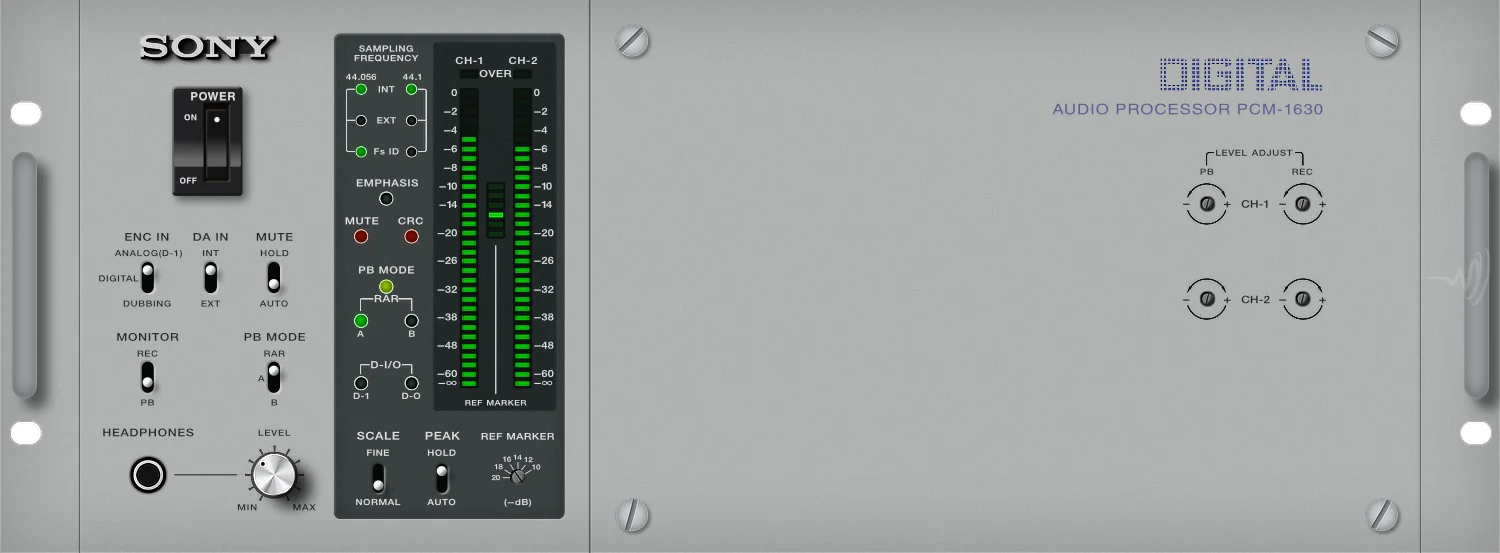The Sony PCM-1600 Digital Audio Processor is a rather elusive piece of audio technology. Despite its reputation and the quality associated with Sony’s PCM line, detailed information about this particular model is surprisingly scarce. Whether you’re looking for technical specifications, user manuals, or even anecdotal experiences, resources are limited. This makes it challenging for enthusiasts, collectors, and professionals to fully understand and utilise the PCM-1600 to its potential.
If you have any knowledge, documentation, or insights about the Sony PCM-1600, we encourage you to share it with us. Your contribution could help fill in the gaps and assist others who are also searching for information on this rare device. Please don’t hesitate to get in touch if you have something to add. Below we have an outline of the Sony PCM-1600 extracted from a presentation paper by Sony.
Low-cost digital audio recording and playback systems have been developed using an adapter-style configuration combined with video tape recorders (VTRs). These adapters function as signal converters, transforming audio signals into PCM (Pulse Code Modulation) signals and then into pseudo-video signals, allowing VTRs to be used for digital audio without requiring any modifications. Two types of systems have been designed: one for consumer use and the other for professional use.
The consumer system is based on home-use VTRs like Betamax, while the professional system requires VTRs with performance capabilities equal to or better than U-matic systems. Both systems’ detailed structures, data configurations, and dropout compensation methods are outlined.
It is well known that traditional analogue tape recorders face technical limitations, which can be addressed by using pulse code modulation techniques. However, earlier digital audio recorders were mostly experimental or used in-house, and the technology was considered too expensive to replace analogue tape recorders.
The new system described in this paper introduces a digital audio tape recorder that uses an adapter combined with a video tape recorder, effectively overcoming the previous cost barriers. The adapter acts as a signal converter between audio, PCM, and pseudo-video signals, making it compatible with standard video tape recorders.
A key factor in reducing costs is the use of low-cost cassette-type video tape recorders, which, although having poorer dropout characteristics compared to four-head video tape recorders used in earlier digital audio machines, are supported by effective dropout compensation methods.
The Sony PCM-1 system is designed for consumer use with Betamax-type VTRs, while the Sony PCM-1600 system is intended for professional use, requiring VTRs with performance equal to or better than U-matic systems. The PCM-1 was launched in September 1977, and the Sony PCM-1600 first became available in April 1978. Both systems support two audio channels.
Dropouts on magnetic tapes are mainly caused by scratches or small particles that adhere to the tape during production or use. To develop effective dropout compensation systems, statistical data on dropout occurrences were collected. It was found that 99.9% of dropouts are within three horizontal lines on the tape, but even a single dropout can cause noticeable noise in high-performance digital audio recorders.
There is significant variation in dropout rates between different production lots of tapes, which means that the dropout compensation system must be designed to accommodate these variations.
To address this, a new error-correcting code, called “Cross Word Code,” was developed specifically for digital audio tape recorders and was implemented in the PCM-1600 system. This code provides robust error correction, exceeding the theoretical limits for burst error correction, while maintaining a low probability of incorrect error correction. The code is effective for both burst and random errors, and if errors exceed the code’s correctability, the system can minimise data loss by allowing for interpolation, rather than discarding entire blocks of data as with conventional codes.






